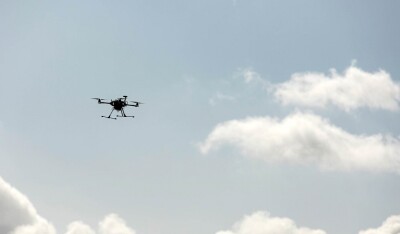As the smallest of the Scandinavian countries, Denmark is sometimes overshadowed by initiatives and developments elsewhere in the region. However, countless drone companies and service providers based in Denmark are using the technology to create value, with applications that provide a baseline for scale. These use cases are connected to a larger initiative that other countries in Scandinavia and across the entire world can learn from to create an even stronger drone industry.
A National Case Study for Drones in Denmark
Due to its successful drone industry development over the past decade, Denmark is positioning itself as a model for other European countries to learn from. A recent report outlines how Denmark’s national drone ecosystem offers instructive insights for other countries that want to enable a similar ecosystem that connects with the larger drone industry.
Issued in March of 2024, “Building a national drone industry: Lessons from Denmark” outlines why Danish drone operators are eager to expand commercial use across various industries. This expansion can be built off the success Denmark has already seen in places like UAS Denmark, which is one of few airports that offers a large BVLOS (Beyond Visual Line of Sight) airspace over land and sea, available on a 24-hour notice. This allows organizations to fully explore the technology in order to eventually realize the full potential of drone technology for the benefit of society.
The report outlines how and why Denmark is a prime candidate for a national case study on how European members can best develop their own drone industries while also considering their own unique strengths. The context it provides is crucial in shaping the operational and regulatory environment for all European drone enterprises.
Drone Deliveries to the Island of Ærø
One of the Danish Baltic Sea islands, Ærø, is figuratively and literally disconnected from the larger country and continent, making the delivery of essential medical supplies time-consuming and expensive. Today, if someone has a blood sample taken, the sample must be transported by ferry and car for analysis at the hospital's laboratory. Drones could completely change this paradigm, which a recent test proved.
A drone from Odense University Hospital (OUH) in Svendborg flew 50 kilometers to bring blood samples to the laboratory in a way that was 40 minutes faster than traditional transport. The test provided a baseline for longer term plans that will see drones used to transport medicines and equipment between hospitals, laboratories, medical centers, nursing homes and home care.
Holo Air, which was one of the commercial players in the project, is working on autonomy in the sky. As part of the initial test, the company called out how it is in principle ready to offer these types of services immediately.
Accelerating the Green Transition
In order to reach green transition targets by 2030, Invest in Denmark is providing support to Danish companies and universities that are embracing drone technology to address logistical challenges in the wind industry. The drone project ADD2WIND, a collaborative initiative involving industry leaders such as Vestas, Siemens Gamesa, Ørsted, Vattenfall, and Aalborg University, is at the forefront of this endeavor.
This project explored using drones to deliver supplies to onshore wind turbines under a variety of conditions. The drones flew beyond the pilot's visual line of sight (BVLOS), showing off the autonomous capabilities of the technology. In most cases, they flew and operated just feet away from the wind turbine structures.
While the lessons from these tests and applications are specific to wind farms in Denmark, the insights can be applied more broadly, further supporting Denmark's position across the drone industry.
The Advantages of Preventive Maintenance
With offices in Copenhagen, Odense, and Skanderborg, the team at Upteko is committed to delivering end-to-end solutions in a variety of sectors across the country and beyond. While the industries they serve range from oil & gas to government to construction, their demonstration of how autonomous drones can better support offshore vessel operations and inspections is especially revealing.
To ensure that offshore wind turbines continuously run optimally, preventive maintenance is carried out by skilled technicians. The time and costs associated with these established processes are significant, which the Upteko team demonstrated can be impressively reduced. The project introduced an unseen level of autonomy and speed that will optimizes costs of servicing offshore wind turbines. At scale, they've calculated the difference in costs and savings as the following:
- Reduced downtime of 12,250 hours
- Reduced CO2 by 13,000 tons per year
- Energy production increased by 39,200 MWh per year
- Reduced service costs by DKK 424,000 million per year
- Increased employment of 180 employees
While the value they've calculated is specific to this application, the approach to using drone technology to reduce established costs and an established environmental footprint can be applied to countless tasks in various other industries.
These are just a few of the ways that drones are being utilized across Denmark. Stay tuned for more updates and examples, or get in touch to let us know what companies and use cases we should highlight next.
Want more insights on UAVs Across Europe?
Commercial UAV Expo Europe will bring the commercial UAS ecosystem together. The event will serve as the pivotal platform for commercial drone professionals across Europe to explore, connect, and innovate within the rapidly evolving world of UAS.















Comments